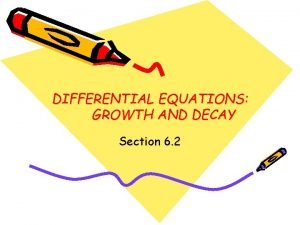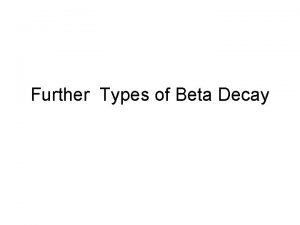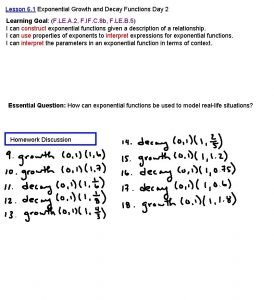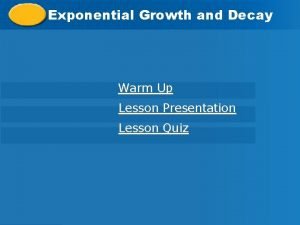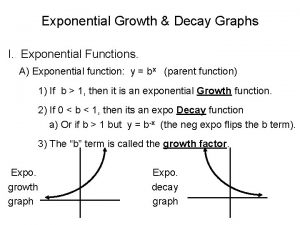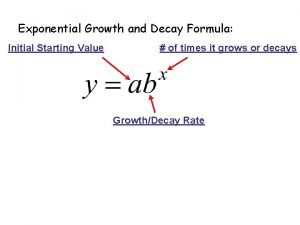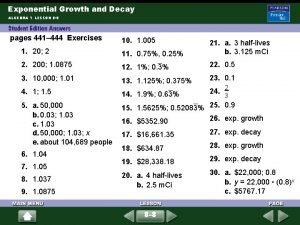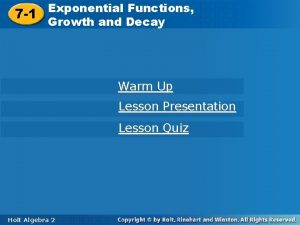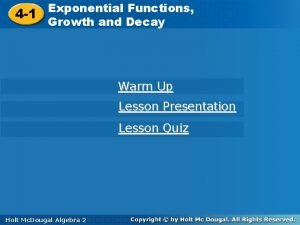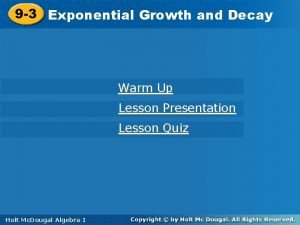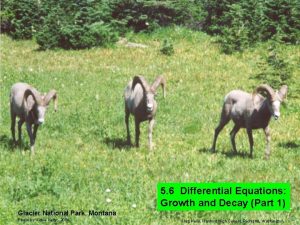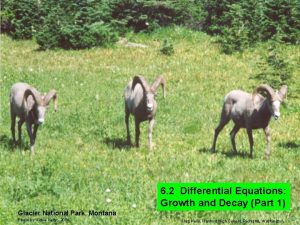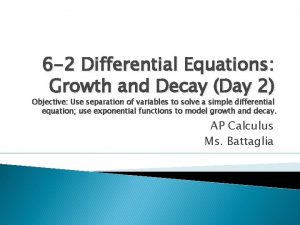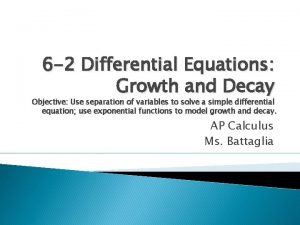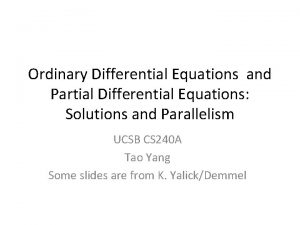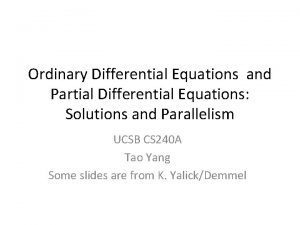5 6 Differential Equations Growth and Decay Part












- Slides: 12

5. 6 Differential Equations: Growth and Decay (Part 2) Glacier National Park, Montana Photo by Vickie Kelly, 2004 Greg Kelly, Hanford High School, Richland, Washington

Objectives • Use exponential functions to model growth and decay in applied problems.

Radioactive Decay The equation for the amount of a radioactive element left after time t is: The half-life is the time required for half the material to decay. There is a table of half-life values for common isotopes on page 363.

Half-life:

Example 3: Suppose that 10 g of the plutonium isotope Pu-239 was released in the Chernobyl nuclear accident. How long will it take for the 10 g to decay to 1 g?

Example 4: Suppose an experimental population of fruit flies increases according to the law of exponential growth. There were 100 flies after the second day of the experiment and 300 after the fourth day. Approximately how many flies were in the original population?

Example 5: Four months after it stops advertising, a manufacturing company notices that its sales have dropped from 100, 000 units per month to 80, 000 units per month. If the sales follow an exponential pattern of decline, what will they be after another 2 months?

Newton’s Law of Cooling Espresso left in a cup will cool to the temperature of the surrounding air. The rate of cooling is proportional to the difference in temperature between the liquid and the air. (It is assumed that the air temperature is constant. ) where is the temperature of the surrounding medium, which is a constant.

Example 6: Let y represent the temperature (in °F) of an object in a room whose temperature is kept at a constant 60°. If the object cools from 100° to 90° in 10 minutes, how much longer will it take for its temperature to decrease to 80°?

Example 6: Let y represent the temperature (in °F) of an object in a room whose temperature is kept at a constant 60°. If the object cools from 100° to 90° in 10 minutes, how much longer will it take for its temperature to decrease to 80°?

Example 6: Let y represent the temperature (in °F) of an object in a room whose temperature is kept at a constant 60°. If the object cools from 100° to 90° in 10 minutes, how much longer will it take for its temperature to decrease to 80°?

Homework 5. 6 #33, 35, 41, 45, 57, 74
 Exponential differential equation
Exponential differential equation How to find decay factor
How to find decay factor Beta decay equation
Beta decay equation Growth and decay formula
Growth and decay formula What is the difference between growth and decay
What is the difference between growth and decay Exponential decay or growth
Exponential decay or growth Exponential growth function
Exponential growth function Exponential growth and decay algebra 1
Exponential growth and decay algebra 1 7-1 exponential functions growth and decay
7-1 exponential functions growth and decay 7-1 exponential functions growth and decay
7-1 exponential functions growth and decay Exponential decay formula
Exponential decay formula Exponential decay car depreciation worksheet
Exponential decay car depreciation worksheet 9-3 exponential growth and decay
9-3 exponential growth and decay
